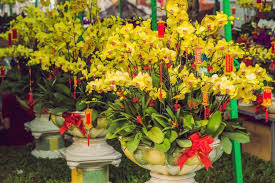# Products from Phalaenopsis Orchids in the Food Industry

Phalaenopsis orchids, commonly known as moth orchids, are celebrated for their beauty and elegance, but their potential extends far beyond ornamental purposes. In recent years, the food industry has begun to explore innovative ways to utilize these stunning flowers, harnessing their unique flavors, colors, and health benefits. This article delves into various products derived from Phalaenopsis orchids in the food industry, highlighting their uses, benefits, and the growing trend of incorporating edible flowers into culinary practices.
## Table of Contents
1. **Introduction to Phalaenopsis Orchids**
– 1.1 Overview of Phalaenopsis Orchids
– 1.2 Importance of Edible Flowers
2. **Culinary Uses of Phalaenopsis Orchids**
– 2.1 Infusions and Teas
– 2.2 Salads and Garnishes
– 2.3 Decorative Culinary Art
3. **Health Benefits of Phalaenopsis Orchids**
– 3.1 Nutritional Value
– 3.2 Antioxidant Properties
– 3.3 Traditional Medicinal Uses
4. **Phalaenopsis Orchid Products in the Market**
– 4.1 Edible Petals
– 4.2 Extracts and Essences
– 4.3 Infused Oils and Vinegars
5. **Growing and Harvesting Phalaenopsis Orchids for Food**
– 5.1 Cultivation Techniques
– 5.2 Sustainable Practices
– 5.3 Harvesting Methods
6. **Phalaenopsis Orchids in Fine Dining**
– 6.1 Use in Michelin-Star Restaurants
– 6.2 Innovative Dishes Featuring Orchids
– 6.3 Pairing with Wines and Other Beverages
7. **Recipes Featuring Phalaenopsis Orchids**
– 7.1 Orchid-Infused Cocktails
– 7.2 Orchid-Enhanced Desserts
– 7.3 Savory Dishes Incorporating Orchids
8. **Market Trends and Consumer Demand**
– 8.1 Growing Popularity of Edible Flowers
– 8.2 Consumer Awareness and Education
– 8.3 The Role of Social Media in Promotion
9. **Challenges in the Edible Flower Industry**
– 9.1 Regulatory Hurdles
– 9.2 Quality Control Issues
– 9.3 Market Saturation Risks
10. **Future Prospects for Phalaenopsis Orchid Products**
– 10.1 Innovations in Product Development
– 10.2 Expanding Culinary Applications
– 10.3 Environmental Sustainability Considerations
—
## 1. Introduction to Phalaenopsis Orchids
### 1.1 Overview of Phalaenopsis Orchids
Phalaenopsis orchids are a diverse group of epiphytic plants native to Southeast Asia. Known for their striking, long-lasting flowers, these orchids are a popular choice for both home growers and florists. While they have long been appreciated for their aesthetic qualities, recent trends have highlighted their potential in the culinary world.
### 1.2 Importance of Edible Flowers
Edible flowers have been used in various cultures for centuries, adding color, flavor, and nutritional benefits to dishes. As the culinary world embraces unique flavors and aesthetics, the use of edible flowers like Phalaenopsis orchids is becoming more mainstream, enhancing both home cooking and fine dining experiences.
## 2. Culinary Uses of Phalaenopsis Orchids
### 2.1 Infusions and Teas
Phalaenopsis orchids can be used to create flavorful infusions and teas. The petals can be steeped in hot water to release their delicate flavor and aroma, resulting in a soothing beverage that captures the essence of the flower. This infusion can also be enhanced with other herbs and ingredients to create unique blends.
### 2.2 Salads and Garnishes
The vibrant colors and unique shapes of Phalaenopsis orchid petals make them an attractive addition to salads. Their subtle sweetness complements various greens and vegetables, adding both visual appeal and flavor. Chefs often use these orchids to garnish dishes, elevating the presentation and overall dining experience.
### 2.3 Decorative Culinary Art
In high-end culinary settings, Phalaenopsis orchids are often utilized as decorative elements in plating. Their striking appearance allows chefs to create visually stunning dishes that captivate diners. Incorporating these flowers into culinary art reflects the growing trend of merging aesthetics with flavor in the food industry.
## 3. Health Benefits of Phalaenopsis Orchids
### 3.1 Nutritional Value
Phalaenopsis orchids, like many edible flowers, contain essential vitamins and minerals. They are low in calories, making them a guilt-free addition to various dishes. Their nutritional profile can contribute to a well-balanced diet while enhancing the visual appeal of meals.
### 3.2 Antioxidant Properties
Orchids are known to possess antioxidant properties that help combat oxidative stress in the body. Incorporating these flowers into the diet may contribute to overall health and well-being. The presence of antioxidants can also enhance the nutritional profile of dishes, making them not only visually appealing but also healthful.
### 3.3 Traditional Medicinal Uses
In some cultures, Phalaenopsis orchids have been used for their purported medicinal properties. Traditional practices may involve using the flowers in herbal remedies to treat various ailments, although scientific research on these claims is limited. Nevertheless, the historical use of orchids in medicine highlights their significance in cultural practices.
## 4. Phalaenopsis Orchid Products in the Market
### 4.1 Edible Petals
Edible petals from Phalaenopsis orchids are available for purchase in specialty stores and online markets. These petals are typically harvested and packaged for culinary use, offering consumers a convenient way to incorporate the beauty and flavor of orchids into their dishes.
### 4.2 Extracts and Essences
Phalaenopsis orchids are also used to produce extracts and essences, which can be used in baking, cooking, and mixology. These concentrated forms allow chefs to infuse the delicate flavor of orchids into various culinary creations, enhancing the overall taste profile of dishes and beverages.
### 4.3 Infused Oils and Vinegars
Infusing oils and vinegars with Phalaenopsis orchids creates unique condiments that add flavor to dishes. These products can be used in salad dressings, marinades, and finishing oils, providing a floral touch to everyday cooking.
## 5. Growing and Harvesting Phalaenopsis Orchids for Food
### 5.1 Cultivation Techniques
Growing Phalaenopsis orchids for culinary use requires specific cultivation techniques to ensure the flowers remain edible. This includes using organic growing methods and avoiding harmful pesticides. Maintaining optimal growing conditions is essential to producing high-quality flowers.
### 5.2 Sustainable Practices
Sustainable practices in orchid cultivation are becoming increasingly important as consumer demand for organic products grows. Implementing eco-friendly methods not only benefits the environment but also enhances the appeal of Phalaenopsis orchid products in the food market.
### 5.3 Harvesting Methods
Harvesting Phalaenopsis orchids for culinary use requires careful handling to maintain the integrity and quality of the flowers. Proper techniques, such as harvesting at the right time and using sanitized tools, are essential for ensuring that the flowers are safe and suitable for consumption.
## 6. Phalaenopsis Orchids in Fine Dining
### 6.1 Use in Michelin-Star Restaurants
Phalaenopsis orchids are increasingly featured in Michelin-star restaurants, where chefs experiment with their flavors and aesthetics. These prestigious establishments often showcase edible flowers in innovative ways, creating unique dishes that highlight their culinary versatility.
### 6.2 Innovative Dishes Featuring Orchids
Chefs around the world are crafting innovative dishes that incorporate Phalaenopsis orchids, from savory entrees to exquisite desserts. Their ability to elevate a dish’s visual appeal while adding subtle flavors makes them a favorite among culinary professionals.
### 6.3 Pairing with Wines and Other Beverages
Phalaenopsis orchids can also be used to enhance beverage experiences. Their delicate flavor profiles pair well with various wines and cocktails, creating a harmonious dining experience that engages all the senses.
## 7. Recipes Featuring Phalaenopsis Orchids
### 7.1 Orchid-Infused Cocktails
Creating cocktails infused with Phalaenopsis orchids adds a unique twist to traditional recipes. By muddling the petals or infusing them into spirits, mixologists can craft visually stunning and flavorful drinks that impress patrons.
### 7.2 Orchid-Enhanced Desserts
Phalaenopsis orchids can be incorporated into desserts in various ways, such as garnishes, flavor infusions, or even as a main ingredient. Recipes may include orchid-infused panna cotta, floral cupcakes, or ice creams, showcasing the versatility of these beautiful flowers.
### 7.3 Savory Dishes Incorporating Orchids
Savory dishes can also benefit from the addition of Phalaenopsis orchids. They can be used in salads, as a garnish for seafood, or incorporated into sauces to add depth and character to the dish.
## 8. Market Trends and Consumer Demand
### 8.1 Growing Popularity of Edible Flowers
The trend of using edible flowers in culinary applications is rapidly growing. Consumers are increasingly seeking unique flavors and visually appealing dishes, leading to greater demand for products like Phalaenopsis orchids in the food industry.
### 8.2 Consumer Awareness and Education
As the culinary landscape evolves, consumer awareness of the benefits and uses of edible flowers is increasing. Educational efforts, such as workshops and cooking classes, help inform consumers about incorporating orchids into their diets.
### 8.3 The Role of Social Media in Promotion
Social media platforms play a significant role in promoting the use of edible flowers like Phalaenopsis orchids. Chefs and home cooks alike share visually stunning dishes, inspiring others to explore the culinary possibilities of these beautiful blooms.
## 9. Challenges in the Edible Flower Industry
### 9.1 Regulatory Hurdles
The edible flower industry faces regulatory challenges, as ensuring food safety and compliance with health regulations is crucial. Navigating these regulations can be complex for producers and marketers of Phalaenopsis orchid products.
### 9.2 Quality Control Issues
Maintaining consistent quality in edible flowers is essential for consumer satisfaction. Quality control measures must be implemented during cultivation, harvesting, and packaging to ensure that products meet the highest standards.
### 9.3 Market Saturation Risks
As the popularity of edible flowers grows, there is a risk of market saturation. Producers must differentiate their products and find innovative ways to capture consumer interest to remain competitive.
## 10. Future Prospects for Phalaenopsis Orchid Products
### 10.1 Innovations in Product Development
The future of Phalaenopsis orchid products looks promising, with ongoing innovations in product development. This includes creating new flavor profiles, exploring alternative uses, and developing value-added products for the food market.
### 10.2 Expanding Culinary Applications
As chefs continue to experiment with edible flowers, the culinary applications for Phalaenopsis orchids are likely to expand. This may include new recipes, techniques, and pairings that enhance the overall dining experience.
### 10.3 Environmental Sustainability Considerations
Sustainability will play a crucial role in the future of the edible flower industry. As consumers become more environmentally conscious, producers must adopt sustainable practices in growing and harvesting Phalaenopsis orchids to meet this demand.
—
## Conclusion
Phalaenopsis orchids are not only stunning ornamental plants but also valuable contributors to the food industry. From culinary uses to health benefits and innovative products, these orchids are making their mark in various culinary applications. As consumer interest in edible flowers continues to grow, the future looks bright for Phalaenopsis orchid products. By embracing sustainability, innovation, and creativity, the food industry can unlock the full potential of these exquisite blooms, enriching the culinary experience for everyone.

